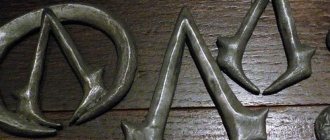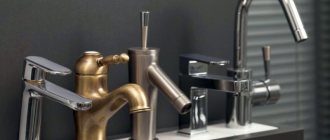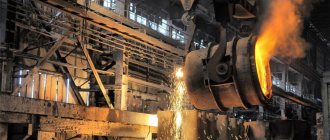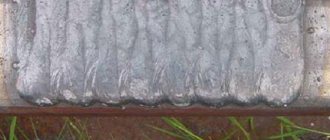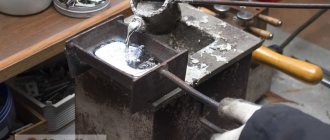Stainless steel, or corrosion-resistant steel, is an alloy of iron and carbon. It contains chromium, from which chromium oxide is formed with the help of oxygen, and due to this, an oxide film is created on the surface, protecting the product from corrosion. In this article we will talk about the properties of this type of steel and find out whether stainless steel is magnetic.
Properties of corrosion-resistant steel
The alloy contains at least 10.5% chromium. In addition to its anti-corrosion properties, it adds some positive qualities to fame:
- easy processability by cold forming;
- high resistance to atmospheric corrosion and various chemical influences;
- sufficiently high strength;
- durability in use without loss of their qualities and performance properties, the average service life of such alloys is approximately 40-50 years;
- decent appearance, smooth surface;
- It is quite easy to clean from contamination with household detergents, which makes its maintenance more economical than that required by products made from ordinary steel;
Currently, more than 250 types of stainless steel have been created, which contain not only chromium, but also nickel, cobalt, titanium, molybdenum, and niobium. The performance properties and scope of application of the steel depend on what chemical element and in what quantities is added to the alloy. Carbon is an essential element in stainless steel. Thanks to it, the alloy acquires hardness and strength.
Magnetic properties of stainless steel
It is impossible to distinguish between the stainless steel in front of you and ordinary steel by eye. It is believed that stainless steel should not be magnetic, but it is quite difficult to obtain a reliable result. It happens that steel, which is not magnetic, perfectly resists rust, and vice versa, a product that has the ability to magnetize rusts. The magnetic properties of stainless steel depend on the chemical composition of the alloy.
Bodies that are in a magnetic field have the ability to be magnetized and are divided into:
- paramagnetic materials have a magnetic susceptibility coefficient greater than zero;
- diamagnetic materials have a magnetic susceptibility coefficient below zero;
- ferromagnets have increased sensitivity to magnetic fields and are intensely magnetized even in the presence of weak magnetic radiation. They are used as additives to stainless steel, improving its performance characteristics.
Provider
Are you interested in the magnetic properties of stainless and hardened steel? The magnetic properties of stainless and hardened steel from the supplier "Auremo" comply with GOST and international quality standards. We offer to buy stainless and hardened steel from specialized warehouses of the supplier “Auremo” with delivery to any city.
Buy, favorable price
The warehouse of the supplier "Auremo" offers the widest selection of stainless and hardened steel. Stainless and hardened steel are always available, the price is determined by the technological features of production without including additional costs. Buy stainless and hardened steel today, the price is optimal from the supplier. We are waiting for your orders. We have the best price-quality ratio for the entire range of products. Experienced managers are in touch - they will quickly help you buy stainless and hardened steel in bulk or in installments. Regular customers can buy stainless steel products at a discount; the price is the best in this rental segment. The supplier "Auremo" is a recognized expert in the rolled metal market. Thanks to representative offices in Eastern Europe, we have the opportunity to quickly interact with trading partners.
How to determine the corrosion resistance of steel
To find out whether steel is corrosion resistant or not, you need the following steps:
- thoroughly clean a small area of the part;
- apply a couple of drops of copper sulfate solution;
- if the product is covered with a layer of red copper, then the alloy is susceptible to rust; if nothing has happened, then it is stainless steel.
The degree of corrosion resistance can be determined by the number of main elements that make up the alloy - nickel and chromium. If the chromium content is more than 12%, then this alloy will be anti-corrosion in normal environments; if it is more than 17%, then it can withstand even an aggressive alkaline environment.
Stainless steel that is magnetic
Ferritic alloys
They contain chromium in large quantities, approximately 20%. They have high magnetic properties and resistance to corrosion. They acquire greater softness due to a decrease in carbon composition and are easily amenable to various types of processing. Most often, such alloys are used in heavy industry, at food industry enterprises, and elements of heating systems are also made from them. They are cheaper than austenitic alloys.
Some features of ferritic alloys allow them to be used to replace more expensive materials:
- low level of thermal expansion and thermal conductivity;
- increased temperature resistance and fluidity;
- resistance to deformation and corrosion.
This allows these alloys to be used in the manufacture of electromagnetic drives and actuators.
Martensitic alloys
They have increased strength and are not inferior to carbon steels, thanks to hardening and tempering. These are absolute ferromagnets. They are rare because it is difficult to maintain a pure composition. Alloys with a high chromium content are resistant to humidity and aggressive environments. Excellent weldability, both hot and cold stamping can be used.
Martensites are heat-resistant and capable of self-hardening. They are used in mechanical engineering for the production of abrasives, in the production of cutlery, elements of pumping systems, springs, surgical and various cutting instruments. Among stainless steels, martensitic alloys have the highest magnetizability.
Martensitic-ferritic alloys
They have good performance characteristics and are easy to heat treat. But when welding they tend to form cold cracks. They are used when surfaces that are often exposed to heating are required, such as collectors, boilers, and pipelines.
ETS production
Electrical steel is smelted in blast furnaces at a temperature of 1500-16500 C using the complete oxidation method, which reduces the content of oxygen and harmful impurities in the material to a minimum. Mild steel is obtained, which is cast into ingots or platinum weighing from 0.5 tons or slabs measuring 140X630 mm and 140X1000 mm.
The most popular grades of non-alloy steel: 10880, 10895, 10850, 10860, 11880, 11895, 20880, 21880, 21895 and others, where the first digit indicates the class according to the type of pressure treatment:
- Digit 1 (hot rolled and forged),
- Number 2 (calibrated) shows that the steel has undergone additional processing by cold drawing with a change in the size of the workpiece using roll compression.
The second number shows the silicon content in the workpiece:
- 0 – unalloyed with a silicon content of up to 0.03% without an established aging coefficient (changes in the properties of the metal over time),
- 1 – the aging coefficient is set, that is, the absence of changes in the properties and microstructure of the material is guaranteed.
The number 8 indicates the main qualitative indicator, for this type it is the coercive force.
The fourth and fifth digits establish a quantitative indicator of the coercive force for a given class of steel in whole units of ampere/meter.
Types, ferromagnetic properties and physical quality indicators are formed during the process of rolling blanks into thin sheets or strips.
At the stage of obtaining rolled sheets from steel blanks, two production technologies are used: hot-rolled and cold-rolled processing.
The hot-rolling method involves preheating the slabs to a temperature of 800-13000 C. Then the heated billets are fed to the rolling mill. A rolling mill is a set of alternating rolls with different gap thicknesses between them. The heated workpiece, passing alternately between them, under pressure with the help of plastic deformation, changes the thickness from 7.5 mm-60 mm to 0.05 mm-2 mm. Preheating increases the ductility of the material, but the increased temperature changes the properties of the steel.
Hot rolled electrical steels contain the maximum possible amount of silicon from 3.5% to 4.5%. It has a coarse-crystalline structure with a random arrangement of grains, which reduces its magnetic characteristics. After rolling, the physical properties are the same in all directions, so hot-rolled steel is only isotropic.
Cold-rolled electric steel is produced at ambient temperature in two stages. At the first stage, sheet metal is rolled to a thickness of more than 0.5 mm. Then the steel is cut into sheets or rolled into a roll and annealed at a temperature of 1150-11800 C, followed by rolling to the required thickness. Cold rolled steel can be isotropic or anisotropic. Anisotropic materials have physical properties that are enhanced along the movement of the rolls, which leads to strict structuring of electromagnetic fluxes along the horizontal axis of the metal grains.
Stainless steel that is not magnetic
Austenitic alloys
These are the most commonly used stainless steel alloys; they contain up to 33% nickel and chromium, which increases their corrosion resistance. They have very high strength, cold resistance and electrochemical resistance, are highly polished and scratch resistant.
Widely used in the oil refining and chemical industries, aircraft manufacturing, electrical engineering, equipment for the food industry, for the production of plumbing fixtures, medical and refrigeration equipment, fasteners, containers for food products and liquids.
In the normal state they do not have the ability to magnetize, but after applying cold deformation, when austenite partially transforms into ferrite, magnetic properties can appear. Heat treatment, used to improve the chemical and physical properties of products, dramatically increases the magnetic properties of steels.
Austenitic-ferritic
The composition uses nickel and chromium; manganese, molybdenum, titanium and niobium can also be used. They have increased strength and corrosion resistance. They are widely used in the manufacture of heat exchange equipment.
Use of chromium-nickel steel
Anti-corrosion steel 12Х18Н10Т is an environmentally friendly and durable material. The composition of the chromium-nickel alloy, in addition to the main component - iron, includes up to 19% chromium, which provides it with strong anti-corrosion properties, and 11% nickel, which transfers it to the class of austenites and imparts flexibility, strength and heat resistance. Due to its characteristics, it is widely used. Many people are interested in whether steel grade 12Х18Н10Т is magnetic or not? It is non-magnetic, like all austenitic alloys, and is used in the following industries:
- Chemical - aggressive acids: acetic, nitric, phosphoric are transported through pipes made of this grade of steel.
- Food – dairy, meat, alcohol.
- Mechanical engineering – production of parts in contact with acids and alkalis, production of welded equipment, exhaust system manifolds.
- Petroleum - for the manufacture of pipes.
How to identify food grade stainless steel
Stainless steel is well suited for food storage. It is safe, environmentally friendly, resistant to many chemicals, durable, aesthetically pleasing, and easy to maintain.
Oven trays, stoves, refrigerators and many other household appliances are made from stainless steel. The scope of application of food grade stainless steel is constantly expanding.
Is it possible to determine whether food grade stainless steel is being used or a product that is not suitable for storing food?
If we take the state standard, it is not specifically stated anywhere which stainless steel should be used in the manufacture of products for the food industry. But higher requirements must be applied to materials used in the food industry, preparation, storage and transportation of products. Ordinary stainless steel cannot always withstand various impacts, so experts have developed special steels that meet all the necessary requirements.
How magnetic or non-magnetic an alloy is depends on the amount of nickel it contains. The standard norm is 10%, if you reduce it to 9%, the alloy will begin to magnetize. The best stainless steels are composed of pure austenite. Sometimes, to reduce the cost of steel, manganese is added to the alloy instead of nickel, but the properties of the steel remain at the same level.
Ferrites
To reduce electrical losses, an increase in resistivity is used. Magnetic steel plays an important role in modern manufacturing. Magnetic materials—ferrites—have greater resistance.
Ferrites are obtained from oxides using powder metallurgy. Such materials have ferromagnetic and dielectric properties, which allows them to be used where high and ultrahigh frequencies are used.
The cost of ferrite cores is lower than others due to production automation. Alloys can be divided into 4 groups:
- sintered;
- deformable;
- cast;
- press magnets.

